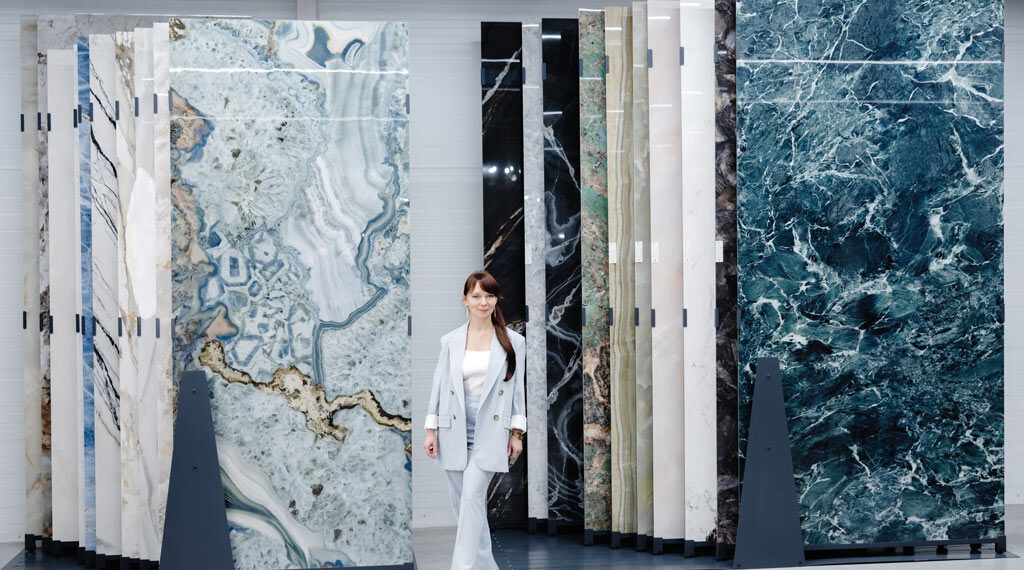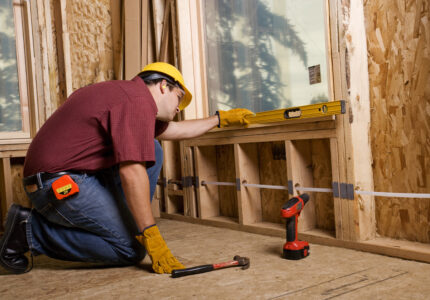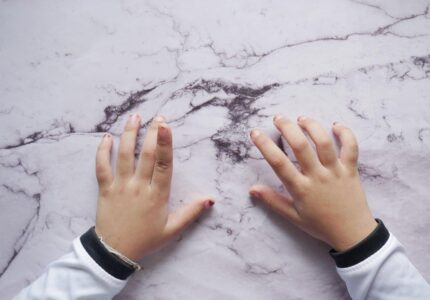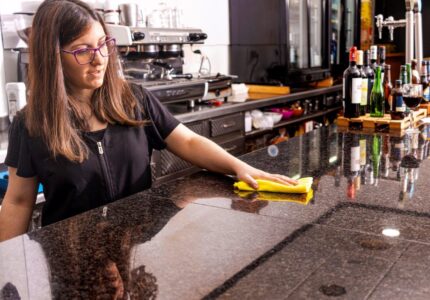Background and Evolution
Porcelain slabs have been around for a while, but only recently have they emerged as a serious contender against natural stones like marble. In the past, when people thought about luxury surfaces, marble was almost always at the top of their list. It’s classic, timeless, and undeniably beautiful. However, marble comes with its own set of challenges—it’s porous, prone to staining, and can scratch or chip if not properly maintained. This is where large-format porcelain slabs enter the scene.
These slabs mimic the look of marble with high precision. In my opinion, porcelain slabs are the industry’s response to the demand for a low-maintenance alternative that doesn’t compromise on aesthetics. The technology behind porcelain has advanced so much that, sometimes, it’s hard to tell the difference between a porcelain slab and a natural marble one.
Manufacturing and Composition
Porcelain slabs are made from a mixture of clay, sand, and other natural minerals. They are fired at extremely high temperatures, making them non-porous, durable, and resistant to scratches and stains. Marble, on the other hand, is a natural stone formed from limestone subjected to intense heat and pressure. It’s luxurious, but because it’s a natural product, it has imperfections and a certain vulnerability to wear and tear.
I believe one reason porcelain slabs are gaining popularity is their ability to replicate these imperfections. Manufacturers have mastered the art of mimicking the veining, texture, and even the subtle color variations found in natural marble. In the hands of a skilled installer, these slabs can transform a space, offering the look of marble without its drawbacks.

Cost Considerations
Now, let’s talk about costs. Porcelain slabs are often more affordable than high-end marble, which can be a deciding factor for many homeowners. Additionally, porcelain doesn’t require the same level of maintenance as marble, meaning long-term savings are significant. However, in my experience, the initial installation cost of porcelain can be similar or even higher due to the need for specialized tools and expertise.
Another consideration is the consistency of the look. Porcelain is manufactured, so every slab can look nearly identical. This uniformity is a plus for some, as it ensures a clean, consistent design. Marble, on the other hand, has natural variations. I think this is part of its charm, but for some clients, it’s a downside.
Practical Implementation
In my experience, working with porcelain slabs is different from working with natural marble. The installation process for porcelain requires specialized equipment and skills due to the material’s hardness and brittleness. It’s fired at high temperatures, making it extremely dense. While this gives porcelain its durability, it also means that cutting it needs precision tools like diamond blades and water jets.
During installation, it’s crucial to have a perfectly level surface since porcelain slabs, often as thin as 6-12mm, can crack under stress if not supported evenly. In my opinion, it’s a good idea to have experienced professionals handle this work. If done right, porcelain can transform a space just as beautifully as natural stone, but with much less hassle in the long run.
Areas of Utilization
Porcelain slabs are highly versatile, and I’ve seen them used in a variety of applications, such as:
- Kitchen Countertops: One of the most popular uses for porcelain slabs is in kitchen countertops. Unlike marble, porcelain doesn’t absorb stains or liquids, making it a great choice for high-traffic, messy areas. Plus, it’s heat-resistant, so placing hot pots or pans directly on the surface won’t be an issue.
- Bathroom Surfaces: In bathrooms, porcelain slabs work wonders for shower walls, flooring, and vanity tops. Since it’s non-porous, porcelain resists moisture and prevents mold growth, which is a common concern with marble. Homeowners love the luxurious look without the fear of water damage.
- Wall Cladding: Large-format porcelain slabs are also used for wall cladding, both indoors and outdoors. I think this is a great option for those looking to achieve a dramatic effect, especially with slabs that mimic the look of marble veins running across the surface. These slabs are lightweight compared to natural stone, making them easier to install vertically.
- Fireplaces: Porcelain’s heat-resistant properties make it a suitable material for fireplace surrounds. It offers the appearance of natural stone while standing up to high temperatures without discoloration or damage.
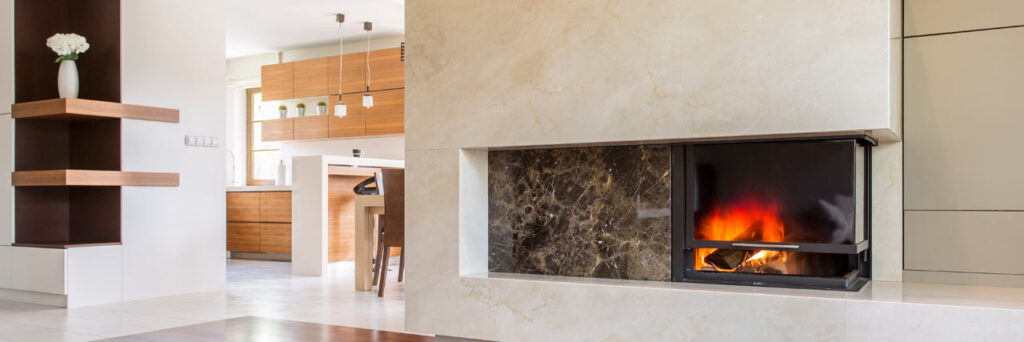
Benefits of Porcelain Slabs
- Durability and Maintenance: One of the biggest benefits, in my opinion, is the durability of porcelain. It resists scratches, chips, and stains, which are common issues with marble. This makes porcelain ideal for high-traffic areas like kitchens and bathrooms. Also, porcelain doesn’t require sealing, whereas marble needs regular maintenance to keep its appearance.
- Cost Efficiency: While the initial investment may be similar to marble, the long-term savings are noticeable. Porcelain’s resistance to damage means less need for repairs or replacements. Also, its stain-proof nature reduces cleaning costs, saving homeowners from buying specialized cleaners or services.
- Consistency in Design: For those who prefer a uniform look, porcelain slabs offer consistency that natural marble can’t. Since the slabs are manufactured, each one is nearly identical. This uniformity can help create a sleek and modern look. However, I believe it’s still important to choose a design with slight variations to mimic the natural feel of stone.
- Lightweight and Versatile: Porcelain slabs are thinner and lighter than natural marble slabs, making them suitable for applications where weight is a concern. For example, I’ve worked on projects where porcelain was chosen for vertical installations like wall cladding and shower surrounds because it’s easier to handle.
- Environmental Friendliness: Finally, porcelain is often more environmentally friendly. The process of quarrying natural marble and transporting heavy slabs can have a significant environmental impact. Porcelain, on the other hand, is made from clay and minerals that are more widely available and require less energy to transport due to their lighter weight.
In my experience, the choice between porcelain slabs and marble often depends on the client’s needs and preferences. Marble has its unmatched charm and natural beauty, but porcelain offers a practical, low-maintenance alternative. The advancements in porcelain manufacturing have made it a great option for those who want the luxurious look of marble without the upkeep.
I think understanding the strengths and limitations of both materials can help clients make an informed decision. Whether it’s for a kitchen, bathroom, or even a fireplace, porcelain slabs offer a versatile, durable, and aesthetically pleasing solution that, when installed correctly, can elevate any space.

